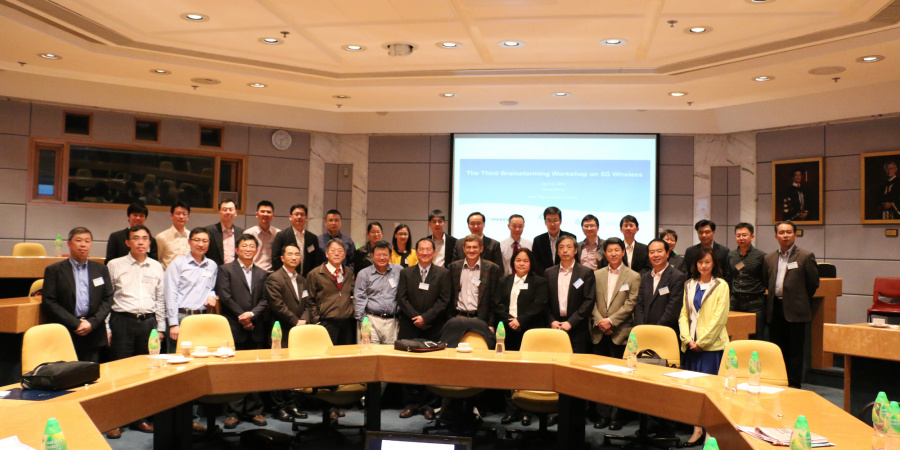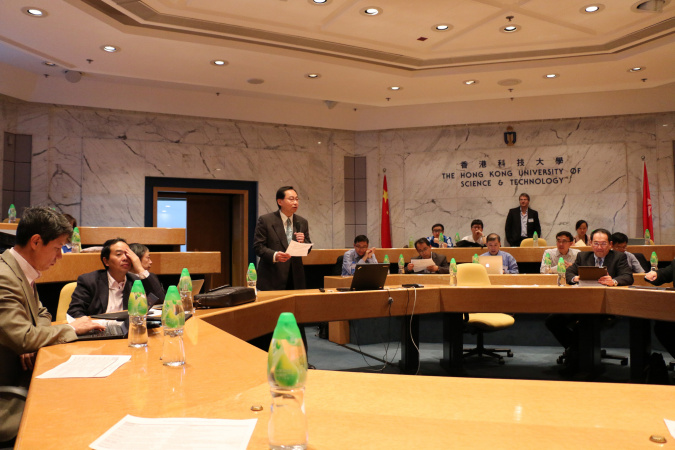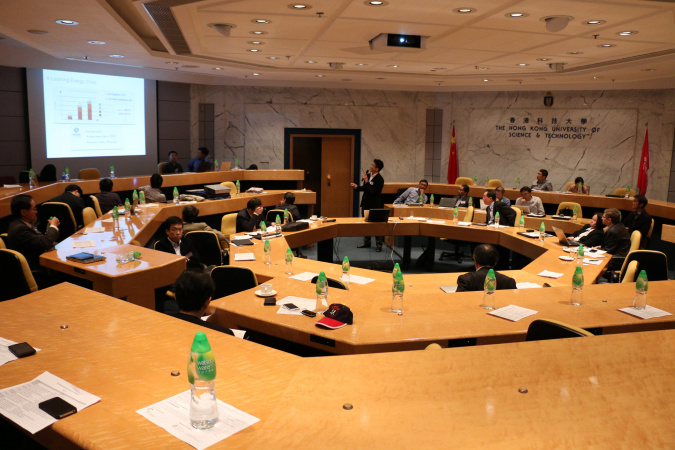The Third Brainstorming Workshop on 5G Wireless
The Third Brainstorming Workshop on 5G Wireless was hosted at HKUST on 2 April 2014 by Prof Vincent Lau of Electronic and Computer Engineering together with other Organizing Committee members.
Following the first workshop in Beijing and the second workshop in Taipei, the Third Brainstorming Workshop on 5G Wireless aimed at promoting the convergence of research interest with industrial commitment and leadership in determining strategic research directions and requirements for 5G systems. This workshop provided a great opportunity for researchers and stake-holders in the academia and the industry to exchange views and explore collaborations on the prospects, challenges and solutions of future 5G systems.
Discussions highlighted the latest advances and possible future directions in topics related to 5G systems. There were over 20 invited speakers from renowned universities and multinational corporations to enable cross-fertilization among researchers working in related areas. Over 60 scholars, scientists, engineers and students participated in this very stimulating and comprehensive workshop.
Workshop Overview
While fourth generation (4G) wireless communication systems are already being deployed worldwide, there are intense research interests in fifth generation (5G) wireless communication technologies in both the academia and the industry. The exponential growth in mobile data traffic and new paradigm of wireless applications demand innovation breakthroughs from worldwide research efforts in wireless communications. Compared with existing communication systems, significantly higher capacity (1000x) and higher energy efficiency are expected in 5G systems over the next decade. Moreover, new types of applications such as device-to-device communications and real-time sensor + control will require future 5G networks to be tactile.
To meet the above challenges, 5G wireless communication systems will require ground-breaking innovations from new system architecture, new applications and services, new algorithms and physical layer designs to new RF and VLSI hardware and devices. It will bring unlimited wireless world interconnection, convergence, and cooperation, together with a large variety of multimedia services and machine-to-machine communications at very high data rates with very low latency and high energy efficiency.
Organizing Committee
- Prof Vincent Lau, Department of ECE, HKUST
- Prof Kaibin Huang, Department of EEE, The University of Hong Kong
- Prof Wei Wang, Department of ISEE, Zhejiang University



